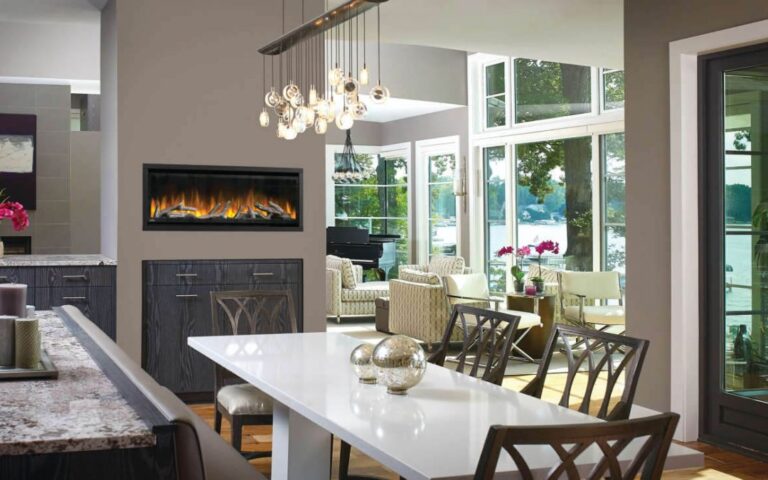
In a world increasingly conscious of its environmental footprint, sustainable home renovation has become more than a trend—it’s a responsibility. Among the most resource-intensive spaces in any home is the bathroom. It consumes water, electricity, and materials at an impressive rate, making it a prime candidate for eco-friendly upgrades. A sustainable bathroom remodel service isn’t just about reducing utility bills or adopting stylish minimalism—it’s about aligning design and functionality with long-term environmental stewardship. Whether you’re starting from scratch or retrofitting an existing space, understanding sustainable materials, fixtures, and compliance guidelines is essential for a responsible and rewarding renovation.
The Foundation: Selecting Eco-Conscious Materials
The materials used in bathroom renovation form the bedrock of sustainable design. Traditional materials often rely on high-energy processes, synthetic compounds, and non-recyclable waste. Sustainable renovation begins by replacing these with responsibly sourced, low-impact alternatives. Recycled tiles, reclaimed wood vanities, and countertops made from post-consumer waste such as glass or paper composite offer both aesthetic appeal and reduced environmental burden. Bamboo has emerged as a popular choice for cabinetry and flooring due to its rapid growth rate and regenerative properties. Cement substitutes like fly ash or slag, derived from industrial byproducts, are used in some concrete applications to reduce carbon emissions.
Low-VOC paints and adhesives are essential in limiting indoor air pollution, particularly in closed spaces like bathrooms. Ventilation is critical, but starting with non-toxic finishes and materials helps minimize harmful off-gassing. When choosing materials, consider durability as a sustainability metric. A product that lasts thirty years is more eco-friendly than one that must be replaced every decade, even if the initial item is technically recyclable. Ideally, your choices should reflect not just low embodied energy but also cradle-to-cradle principles, ensuring that the material can be reused or biodegraded after its lifespan.
Smart Fixtures That Save Resources
Fixtures are the beating heart of any bathroom, and swapping outdated components with high-efficiency alternatives is one of the quickest ways to lower consumption. Water-saving toilets, which use dual-flush or low-flow technology, drastically reduce daily water waste. A conventional toilet may use over six liters per flush, while newer models cut that in half without sacrificing performance. The same applies to showerheads and faucets. Aerated designs mix air with water to maintain pressure while reducing output. This small change can result in thousands of liters saved annually.
Sensor-based fixtures add another layer of efficiency. Touchless taps and lights activate only when needed, reducing unnecessary use. Smart showers allow users to pre-set temperatures and timers, curbing both water and energy waste. Many such innovations now operate via smartphone apps or voice assistants, enabling homeowners to monitor consumption patterns and adjust behavior accordingly.
Energy usage in bathrooms often revolves around lighting and heating. LED lights are the go-to sustainable choice for illumination, consuming up to 80% less energy than traditional incandescent bulbs. Underfloor heating, while a luxury, can be made sustainable when installed with zone controls and powered by renewable sources. Choosing a heat pump water heater or integrating solar thermal systems brings the efficiency full circle, delivering warmth where needed with minimal fossil fuel dependence.
Compliance and Certification Considerations
Sustainable renovations must also meet specific regulations and standards to ensure accountability and authenticity. In many regions, building codes now include stipulations for water-saving fixtures, air quality standards, and energy-efficient designs. Complying with these codes is not merely about passing inspections—it’s about contributing to a safer, greener built environment.
Several third-party certifications can guide and verify sustainable choices. LEED (Leadership in Energy and Environmental Design) is a globally recognized program that evaluates environmental performance in building projects. Bathrooms that feature certified fixtures, recyclable materials, and efficient systems can contribute toward a higher LEED rating for the home. The WaterSense label, administered by the U.S. Environmental Protection Agency, helps consumers identify products that meet rigorous efficiency criteria. Energy Star ratings do the same for electrical appliances, including ventilators and water heaters.
Understanding local compliance is equally important. Municipalities may require permits for changes to plumbing, electrical systems, or structural design. Some regions offer incentives—such as tax credits or rebates—for installing green fixtures or improving insulation. Staying informed on these programs can offset costs while reinforcing a renovation’s sustainable value.
The Intersection of Aesthetics and Ethics
A sustainable bathroom renovation doesn’t mean sacrificing beauty or comfort. On the contrary, it encourages thoughtful design rooted in ethical choices. Minimalist aesthetics often align well with sustainability, emphasizing clean lines, natural textures, and multifunctional spaces that eliminate clutter and waste. Incorporating nature—through biophilic design elements like natural light, indoor plants, and organic materials—creates a calming atmosphere that enhances well-being.
The goal is to build a space that’s efficient yet enjoyable, modern yet enduring. By choosing materials that are ethically sourced and fixtures that are technologically sound, homeowners cultivate not just a stylish interior but a responsible legacy. Bathrooms designed this way become showcases of what’s possible when sustainability guides the renovation process.
Renovating with Tomorrow in Mind
As climate change and resource scarcity press further into the public consciousness, the value of sustainable renovation will only grow. Bathroom projects are particularly impactful because of the room’s daily use and environmental load. Thoughtful choices in materials, fixtures, and compliance not only benefit the planet but also elevate the living experience for years to come. It’s no longer enough to renovate for aesthetics or efficiency alone. Modern bathrooms must reflect our values, our care for the environment, and our commitment to leaving a lighter footprint.
The bathroom of the future begins today—with informed decisions, eco-conscious investments, and a genuine desire to make sustainability a personal standard, not a passing trend. Elevate your space with a renovation that speaks volumes—discover the magic at https://nycrenovation.com/
Author Profile

Latest entries
 NFC NorthNovember 16, 2025Bryce Young’s Career Day Fuels Panthers’ Epic 30-27 Overtime Sweep of Falcons
NFC NorthNovember 16, 2025Bryce Young’s Career Day Fuels Panthers’ Epic 30-27 Overtime Sweep of Falcons NFC NorthNovember 16, 2025Fourth Quarter Fury: Cairo Santos Sinks Vikings, Lifts Bears to Dramatic 19-17 Victory
NFC NorthNovember 16, 2025Fourth Quarter Fury: Cairo Santos Sinks Vikings, Lifts Bears to Dramatic 19-17 Victory AFC EastNovember 16, 2025Six-Touchdown King: Josh Allen, Bills Out-Muscle Buccaneers in 44-32 Shootout
AFC EastNovember 16, 2025Six-Touchdown King: Josh Allen, Bills Out-Muscle Buccaneers in 44-32 Shootout AFCNovember 15, 2025NFL Sunday Preview: Playoff Races Heat Up in Week 11
AFCNovember 15, 2025NFL Sunday Preview: Playoff Races Heat Up in Week 11

 Steelersforever.org
Steelersforever.org





